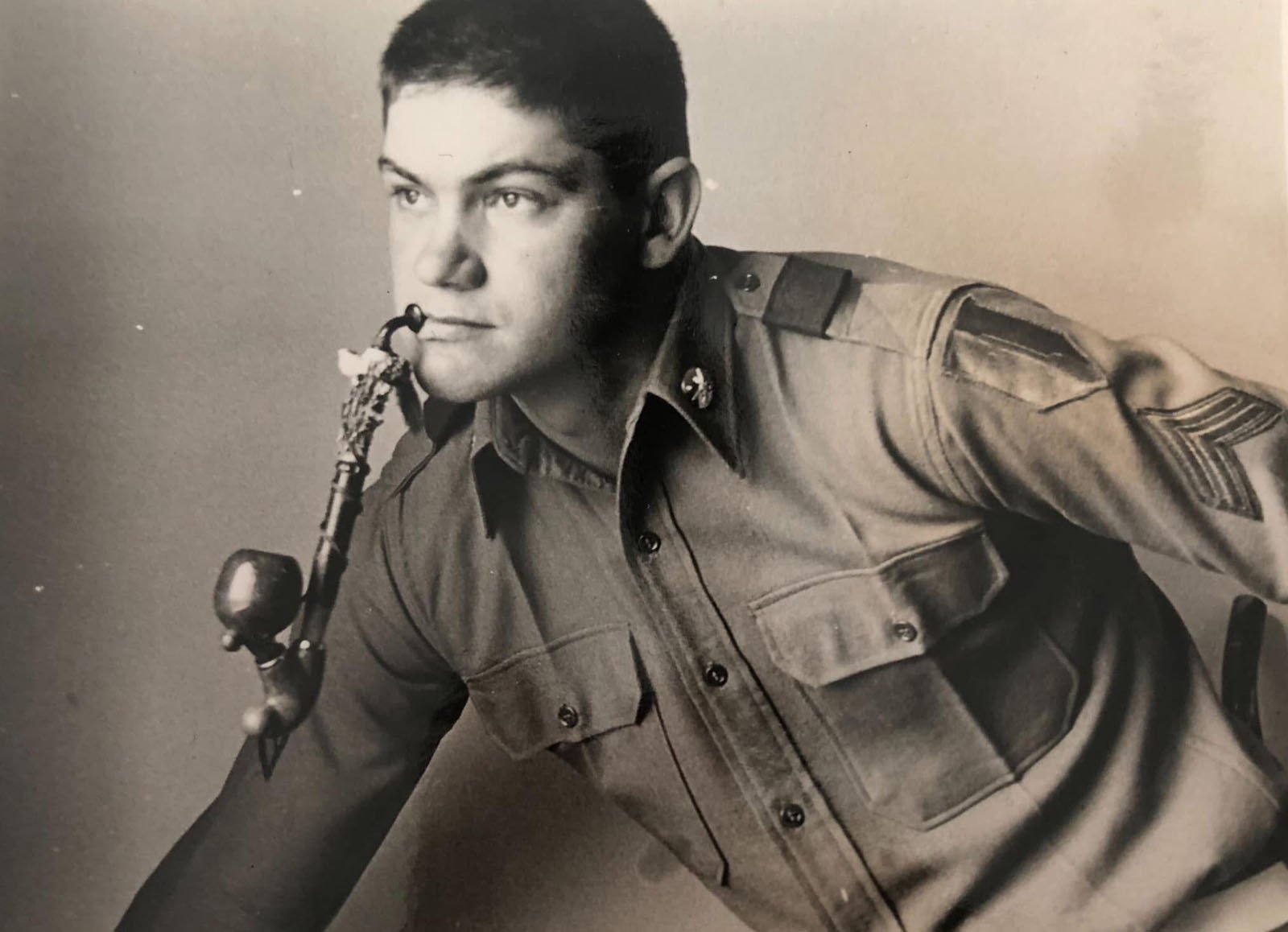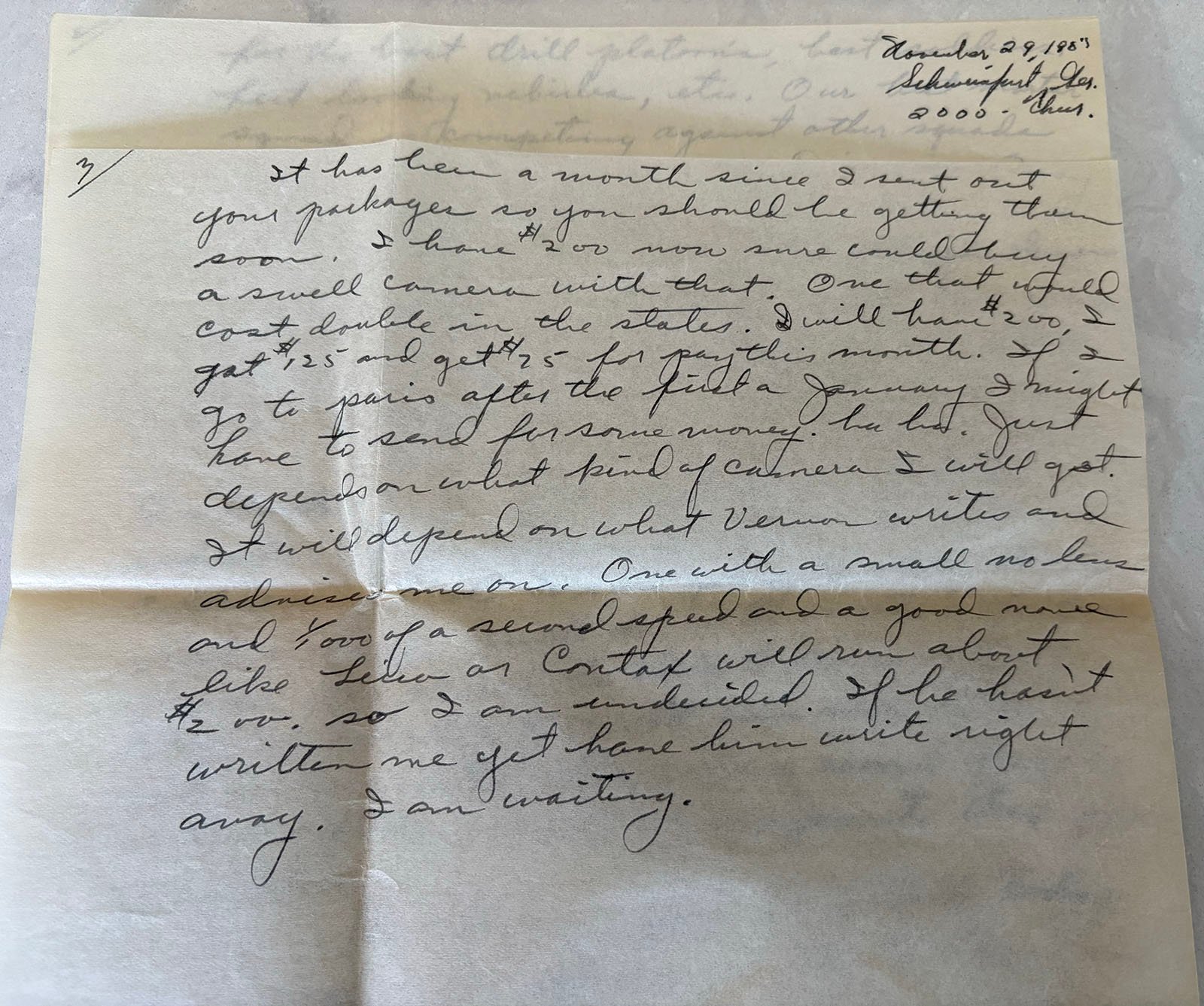Sometimes, You Can’t Fix a Broken Camera (But You Should Still Try)
![]()
Last year, I shared how I was able to get my late father’s favorite film cameras restored to like-new working order and have been spending the last year using them like he did back in the 1970s. It was obviously such a good experience that it spurred a family friend to see if she could take a similar journey.
When I visited my mother recently, family friends Don and Connie Harris came over one evening to share a meal. Connie asked if she could bring over what she described as an old film camera that her father, Jim Michaelsen, picked up back in 1953 in Germany after the war. She sent a photo and I immediately recognized the Leica logo, but I had never seen this particular model before. After consulting with Chris Niccolls, we determined that it appeared to be a Leica III.

Connie had a box full of photos and paperwork to go along with the camera, which she said had been given to her in 2001 by her parents, found in a carload of “things” they had discovered when they moved from Southern California up to Washington.
![]()
A Box of Memories
It is actually incredible what was in that box. Not only were there a plethora of photos captured using the Leica III, but there were enough letters he sent at the time that explained that Jim had managed to scrape together $200 to buy his first camera. In a letter to Connie’s mom, he asks for input on what camera he should get, since $200 should be enough to pick up “a swell camera” in Germany and one that would probably “cost double in the states.” In equivalent value, that would be about $2,500 in today’s money. Jim writes that he’s hoping Connie’s uncle Vernon might have some advice, and Connie explains that Vernon always was a fount of knowledge of the newest tech, hence Jim’s leaning on his suggestions.

Before he bought a camera, Jim was already interested in a “good” brand like Leica or Contax.
Clearly, he chose a Leica. Also in the box of letters and photos is an original price list for the camera dated June 1, 1953.
![]()
Jim was immediately an avid photographer. Not only did he capture scenes from Europe, but he also often included descriptions and captions of how he shot the photos written on the back of the prints. They are a heartwarming glimpse into the time and, perhaps most importantly to Connie, Jim’s personality.
![]()
![]()
![]()
![]()
![]()
![]()
As time passed and Jim came home, he continued to use the Leica III and moved from shooting strictly black and white photos to integrating gorgeous slide film, namely Kodachrome. The number of photos in that box of a baby Connie immediately tells you how much he loved his daughter. You don’t just fire that many shots of slide film if you’re not the proudest father in the world.
![]()
Connie’s dad died in 1959 in a car accident, just six years after he bought the Leica III.
He was 27 years old, and Connie was just a year and a half. While her father was gone, the photos he took remained, and so did his camera, which continued to be put into service for several more years by Connie’s mother and stepfather through the 1960s.
Eventually, the camera found its way into that box and into Connie’s hands, over 30 years later. When Connie got it, she immediately wanted to try to use the camera, but was met with a distressing find: there appeared to be something wrong with the shutter.
![]()
While it still captures photos and renders images beautifully (Leica glass tends to do that), the frames were dotted with white spots, which looked as though there were holes somewhere. Disappointed, Connie returned the camera to that box until she read my story about my dad’s Nikon repair 23 years later.
Well Loved
When I examined the camera that night in my mother’s kitchen, it was obvious to me that it had been well-loved. That is to say, it was beat up. Looking over the photos taken with it, I could see why. I imagine Jim and then Connie’s stepfather must have fired thousands of shots through it over the years. It also clearly traveled the world. It was also 75 years old.
![]()
Connie wondered if it was repairable, and I said that even if it wasn’t, it would be worth trying. Even getting it cleaned up would be nice and allow her to proudly display it in her home and be a constant reminder of her father and her family. She agreed.
![]()
![]()
Servicing cameras of this age is challenging, so I recommended that Connie use KEH the same way I did. Thanks to their truly massive library of cameras and lenses, they have some of the most robust parts bins in the country. If anyone in the U.S. could fix the Leica III, it would be KEH. So, we boxed it up and sent it off, fingers crossed.
Some Cameras Can’t Be Fixed
Unfortunately, Connie’s Leica III was considered “beyond economical repair.” The camera had given its all over the years, but sadly, the shutter was “drained” and had multiple cracks. The light meter was also beyond repair, and the finder mirror couldn’t be cleaned. It simply isn’t something that could be brought back to life. That said, KEH didn’t just put it back in a box and consider the matter closed. No, they did their best.
![]()
![]()
![]()
While that finder couldn’t be fully cleaned, KEH did its best to clear the haze. The Leica III and the two lenses Connie sent with it were fully cleaned. The lenses remain usable if Connie were to find a new Leica body to mount them to. The full set looks beautiful after the overhaul.
![]()
![]()
“The Leica now sits on the shelf where I can remember it has had a good life and lots of travel as well as making family memories,” Connie told me this week. “I’m really impressed with how KEH took care of my dad’s camera.”
![]()
A camera captures precious moments, sure, but it’s easy to forget that these little rectangles of metal and glass are also memories themselves. Even if Connie’s Leica III can’t serve faithfully at her side like it did for her dad, it can still faithfully live as a memento worth loving forever.
Image credits: Film photos by Jim Michaelsen and Connie Harris. Leica III repair photos via KEH.
Disclosure: KEH is a sponsor of the PetaPixel YouTube Channel but had no input on the content of this story.